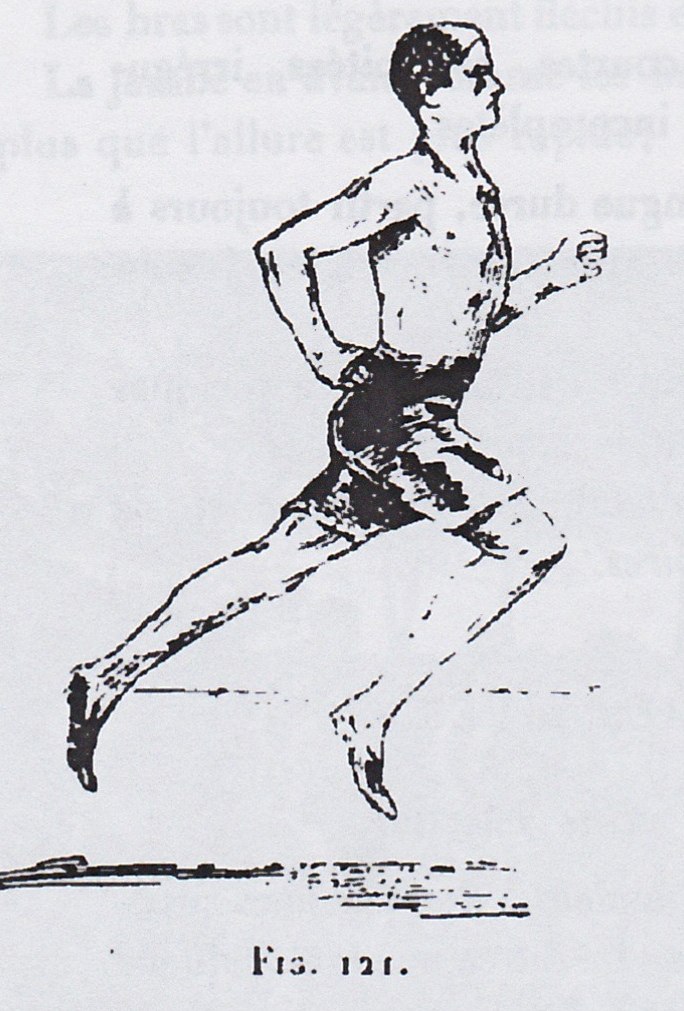
Curated from The Strength Code (Le Code de la Force):
Fitness test (conducted over a 12 hour period, or two days, depending on the intensity level, added “secondary labors” or age of participants):

- Distance walk, weighted 5kg.
- Run, weighted, 5kg.
- Climbing:
- climb a straight rope as high as possible without the use of the legs.
- Max pullups
- High bar hanging
- Lifting: single and two-handed
- Clean
- Jerk
- Snatch
- 40kg mold deadlift AMRAP in 2 minutes without letting go of it or moving the feet. (The tool is essentially a mold to make bricks, but because of today’s availability of training devices, it can easily be replaced). See photo above for the tool then used.
- Bag load & carry, 1m tall, 75cm wide in diameter, filled 80% with sand, sawdust,
- Throwing:
- Dexterity: 12 throws per arm, 1sq.m, 20m away, 0.5m off ground target with rock, ball (tennis ball). Lateral volley throw.
- Swimming:

Complementary events:
- Hurdle run 110m
- Pole vault.
Strength Endurance is determined by:
- 500m run
- 1500m run
- 100m swim
- Underwater dive (organ resilience)
- The performance of all the labors inside of 12 hours also is a test of a person’s endurance and resilience.
Muscular Strength is determined by:
- Two-handed lifts
- Throwing
- Straight rope climb
Speed Strength is determined by:
- 100m sprint
- long jump with momentum

Agility, dexterity, flexibility, movement/hand-eye coordination and the ability to self-regulate energetic expenditure are determined by the four kinds of jumps, throwing, the various running or swimming events and especially when it comes to regulating of the effort, the completion of all 12 “labors”.
Vitality, reflexes, will power and in brief “virile” qualities are observed during the performance of all the labors/tests, which all must not only be performed without failing, but also by giving one’s maximal effort.
Finally, the individual must demonstrate in all labors their aptitude in running, jumping, climbing, lifting, throwing and swimming except for walking/marching and self-defense. Because of its lesser effort, walking is considered a secondary labor, whereas self-defense cannot be a single person event, as it can only be a measure of comparison between two individuals.
Additionally, fighting ability is in direct correlation with the display of general physical aptitude.
It is obvious to notice that the choice of events is combined to favor resilience and speed over pure physical strength. In other words, at equal muscular strength, the individual displaying better speed and resilience/endurance in all events shall stand out. This is logical and corresponds to our definition of what it takes to be strong: strength resides in the heart and lungs more so than in the muscles.

Gregg
The 12 tests were 2 handed press 40 kg, shotput, standing broad jump, running broad jump, standing high jump, running high jump, 100 m run, 500 m run, 1500 m run, 5 m rope climb , 100 m swim, and the underwater dive. I never had a 5m climbing rope, so I was glad when I found The Strength Code, and read the pull-up alternative.
The climb was without using legs, so your model in the first picture just ended the climb test 🙂
I thought the “gueses” were 40 kg ballast bars made of pig iron.
Gregg
Also, the runs weren’t normally weighted. Hebert assumed that normal clothes and gear would weigh up to 5 kg. Anything more than a 5kg load modified the rating.